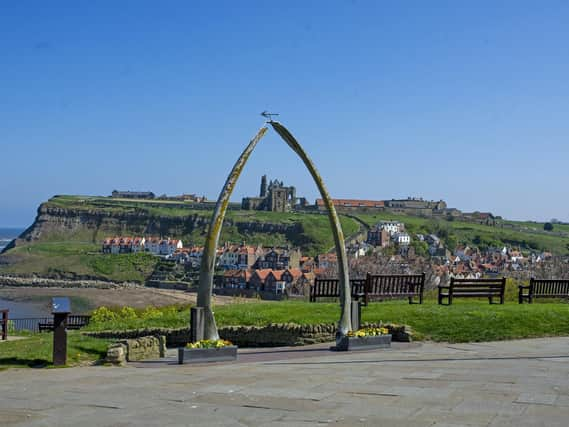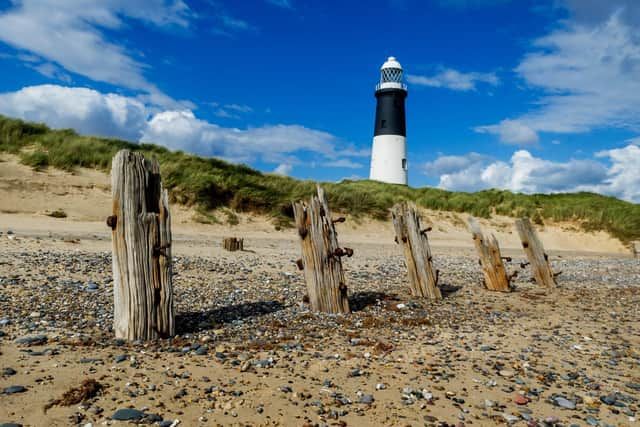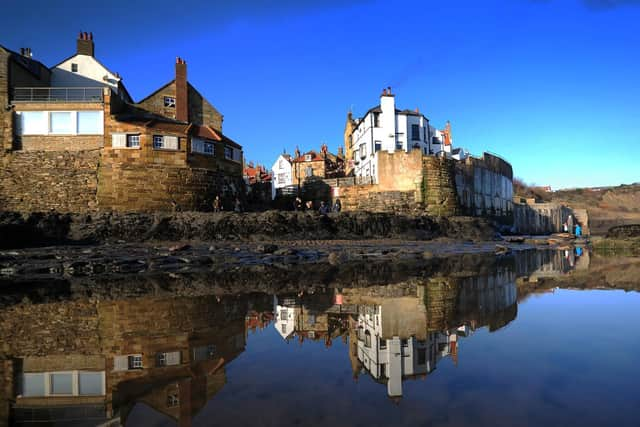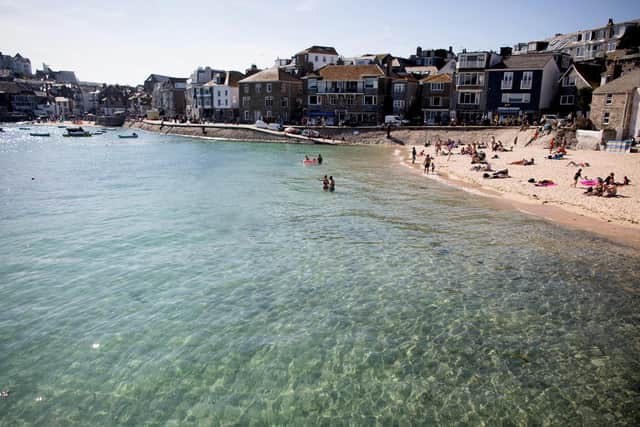From Whitby to Weston Super Mare - a journey around the best of Britain's coastline


Yes, they’re all clichés, but they’re clichés because they are part of our shared experiences. There is something simple, primal even, about a trip to the coast that engenders a sense of wellbeing (as long as you avoid the pesky, and increasingly brazen, dive-bombing gulls).
And here in the UK we are blessed with a coastline that is staggering in its sheer variety and scale – from secluded coves and inlets, to dramatic headlands and epic, windswept beaches.
Advertisement
Hide AdAdvertisement
Hide AdIt’s something that travel writer Peter Naldrett explores with fondness and gusto in his new book Around The Coast in 80 Days. It is, in essence, a guide to Britain’s best coastal towns, beaches and headlands, though as Ian McMillan notes in his foreword, it’s far more than that – it is a celebration of “the sensuous coastline of this country”.


Starting in Liverpool, the book travels up to Scotland, then down the east coast and along our southern shores and up through Wales.
Peter spent the best part of 12 months visiting the various coastal regions, some of which, like the remote northern coast of Scotland, he’d never been to before. “I’d never been right up there before and it was just breathtaking – some of the beaches were amazing. I went to a place called Balnakeil that was built during the early part of the Cold War to monitor Russian planes and in the Sixties it became this kind of hippie crafts place, with glass workers and carpenters. There are still lots of workshops there today, including an awesome chocolate shop.”
Food looms large in the story of our seaside resorts and in Peter’s book, too. “You can still find artisan producers selling smoked fish and crab sandwiches. Each place has its own specialities,” he says.


Advertisement
Hide AdAdvertisement
Hide AdHis journey around the coast took him to some familiar old stomping grounds. “I grew up in Yorkshire so I knew a lot of these places already, but it was really interesting going back and revisiting them and seeing them in a different light.
“I’m a massive fan of Whitby. I’ve been going there for many years and used to walk along the beach to Sandsend and back. It’s got the Dracula links which are interesting and one of my favourite experiences on Yorkshire’s coast is standing beneath the whale bones and looking across at the abbey and knowing you’re going to get fish and chips and sit by the harbour wall.”
He enjoyed new experiences, too. Like cycling on the Cinder Track between Whitby and Scarborough. “That was really interesting, the views are great and you can stop off at Robin Hood’s Bay and look for fossils. I also went to Ravenscar which I’d not been to before. You can park your bike at a National Trust cafe and walk down a few steps to the beach and there’s an amazing seal colony. It’s stunning.”
Part of the allure of Yorkshire’s coast is its diversity. “You’ve got the cliffs and the bird life at Bempton where you can see the puffins and the gannets, and as you head further south the cliffs disappear and eventually you end up heading down towards Spurn Head, which is very flat and intriguing for all sorts of different reasons,” he says. “If you go to the cliffs near Bridlington in the middle of the birding season the bombardment of the senses, the sights and the sounds and smells are quite amazing.”


Advertisement
Hide AdAdvertisement
Hide AdIt’s this variety that characterises the whole of the UK coastline. “You have this divide between the urban and the rural, but I found that everywhere has its own unique appeal. Some places aren’t for everybody, there are some people who might not want to go to Skegness or Blackpool, and there are others for whom a walk to the end of Spurn Head isn’t for them. But going to these different places I managed to see the attraction in all of them, whether it was natural features like the caves and arches, or the cheesy side of our holiday resorts.”
Though our seaside towns are dripping in nostalgia, they can also be places struggling to tackle decline and deprivation. Peter, though, encourages us to look at them differently. “I used to live in Morecambe and when I was there in the mid-1990s it was really quite grim, but there’s been a lot of money spent on it since.
“You go to places like Brighton, Blackpool and Morecambe and you can see they’ve had money spent on them. They have public sculptures and new walkways on the promenade and they can look really attractive. The problem is if you scratch beneath the surface a bit then there is still deprivation in a lot of these places.
“Many coastal towns and resorts suffered in the 1980s when more families started travelling abroad for their summer holidays. They took a nosedive and have been gradually clawing their way back ever since, and some places have done that and are doing really well, and others are finding it more difficult.”
Advertisement
Hide AdAdvertisement
Hide AdLlandudno in North Wales is among the places he visited. “It’s got a lot of history and it’s had a bit of money spent on it. Yes, it’s a bit cheesy but my kids loved going on the amusements there and playing the two penny slot machines. It’s a simple indulgence that should be part of everyone’s childhood.”
Which brings us back to the seaside being inextricably linked to our own memories of family trips to the seaside. “One of the most interesting things I did was revisiting places I went to as a child and seeing them again and taking my own kids there. When I was a kid we went to Cornwall every year up until I was about 14, and from that point up until having my own children I’d never been back.
“So when they were about four or five we went down there and we’ve been back every year since, because there’s that sense of wanting to pass these memories on to them, but also reconnecting with these fabulous places that are an intrinsic part of our childhoods.”
It’s perhaps unfortunate timing to have published a book exalting the wonders of all these places when we can’t explore them, but Peter hopes people find succour from it.
Advertisement
Hide AdAdvertisement
Hide Ad“We’re living in very uncertain and strange times and the irony of this book at the minute is people are being told not to visit the coast and stay away from the beaches.
“But when we’re allowed out again at some point, I think there will be a sense of relief and people will be pleased to spend some time on the British coastline and I think we may see a bit of a renaissance,” he says.
“We can’t go to these places right now, but perhaps this is an opportunity to do virtual visits and maybe plan some future journeys around the British coastline because there are so many amazing places to see.”
Around the Coast in 80 Days by Peter Naldrett is published by Bloomsbury (Paperback: £16.99, ebook: £16.30).
Advertisement
Hide AdAdvertisement
Hide AdEditor’s note: first and foremost - and rarely have I written down these words with more sincerity - I hope this finds you well.
Almost certainly you are here because you value the quality and the integrity of the journalism produced by The Yorkshire Post’s journalists - almost all of which live alongside you in Yorkshire, spending the wages they earn with Yorkshire businesses - who last year took this title to the industry watchdog’s Most Trusted Newspaper in Britain accolade.
And that is why I must make an urgent request of you: as advertising revenue declines, your support becomes evermore crucial to the maintenance of the journalistic standards expected of The Yorkshire Post. If you can, safely, please buy a paper or take up a subscription. We want to continue to make you proud of Yorkshire’s National Newspaper but we are going to need your help.
Postal subscription copies can be ordered by calling 0330 4030066 or by emailing [email protected]. Vouchers, to be exchanged at retail sales outlets - our newsagents need you, too - can be subscribed to by contacting subscriptions on 0330 1235950 or by visiting www.localsubsplus.co.uk where you should select The Yorkshire Post from the list of titles available.
Advertisement
Hide AdAdvertisement
Hide AdIf you want to help right now, download our tablet app from the App / Play Stores. Every contribution you make helps to provide this county with the best regional journalism in the country.
Sincerely. Thank you.
James Mitchinson
Editor